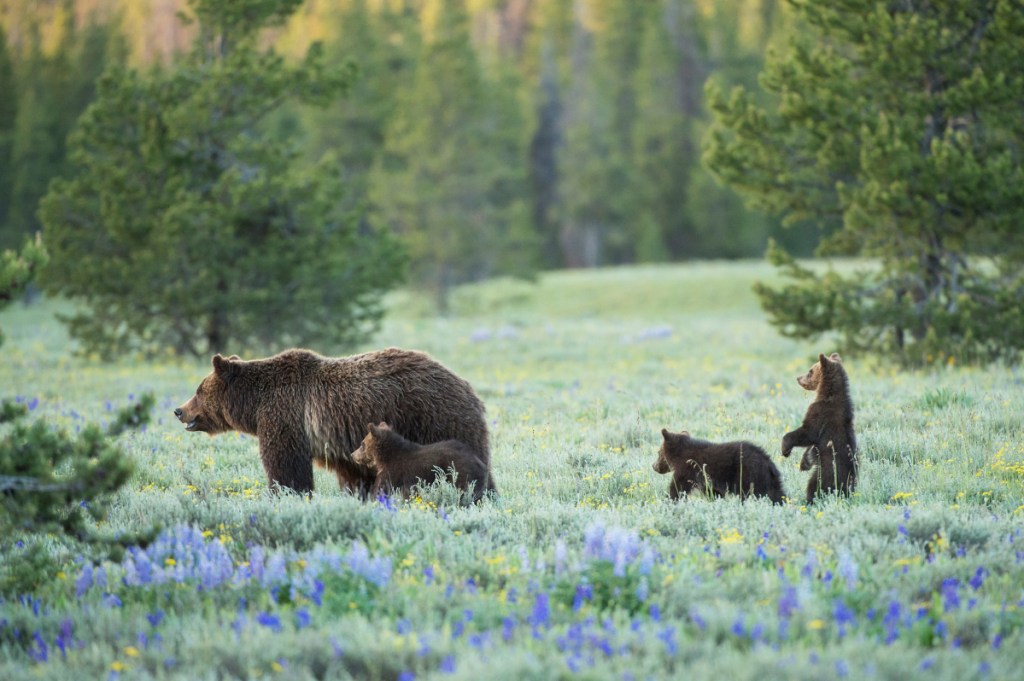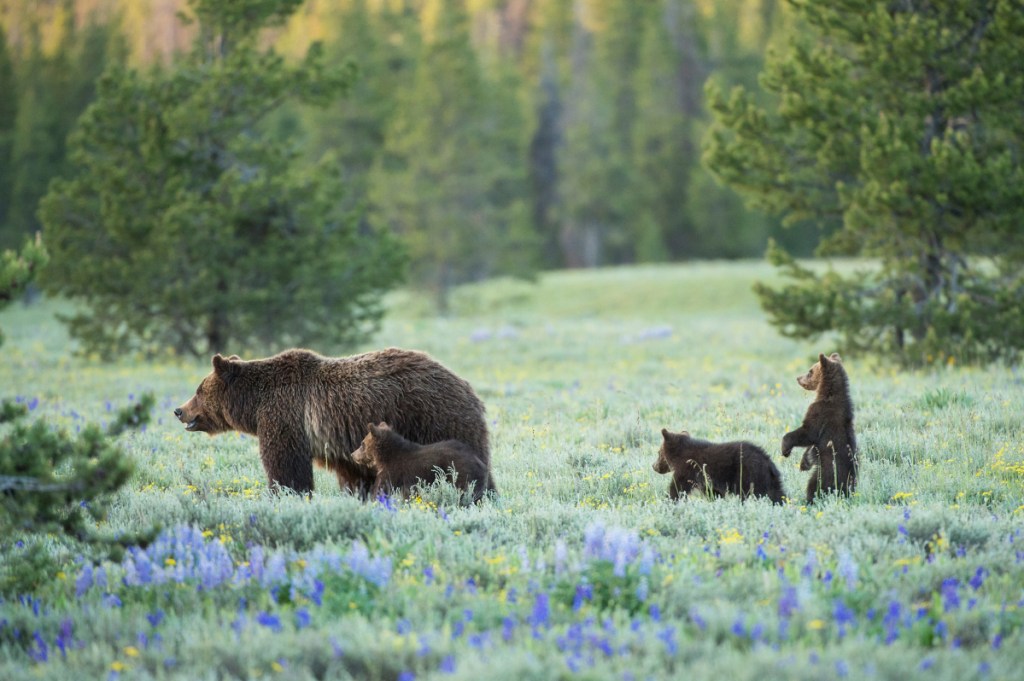The largest grizzly hunt in the Lower 48 in more than 40 years is set to open next month in Wyoming, and more than 7,000 people applied for a chance to kill one of up to 22 bears. Among the tiny number of people who won the draw for permits is a wildlife photographer who has produced some of the most famous images of the area’s grizzlies.
Thomas Mangelsen, who has lived near Grand Teton National Park for four decades, said this week that he will use the permit to shoot bears as he’s always done – with a camera, not a gun.
Mangelsen’s luck in the lottery followed a campaign spearheaded by local hunt opponents to encourage like-minded people to apply for permits in hopes of preventing the death of at least one member of the Yellowstone area’s grizzly population, which was removed from the endangered species list in 2017. Amid a hugely contentious debate over the hunt, their tactic is being hailed by some as a heroic protest and scorned by others as starry-eyed thievery of an opportunity that hunters deserve.
“Well, what other way are we going to do it?” said Mangelsen, 72. “We’ve petitioned the government, we’ve gone to the meetings, we’ve talked and we’ve testified, we’ve gone to legislators. … We have a right to protest in whatever way we feel is necessary.”
Their approach was possible because of regulations in the six hunting areas closest to Grand Teton and Yellowstone national parks, prime grizzly habitat where federal biologists track the species’ population. There, up to 10 hunters will be allowed into the field, one at a time, for 10 days each. The hunt in those areas will end when the first female is killed or after 10 males are killed.
In two other areas that are farther from parks and more populated by humans, up to 12 bears, male or female, can be killed. Hunting is not allowed in the parks, on the road that connects them or in a no-hunt buffer zone in a region east of Grand Teton.
Mangelsen is No. 8 on the permit list for the closer areas, which means his turn will come up only if none of the first seven hunters has killed a female bear. But he and organizers of the campaign said another supporter, a woman who lives in the Jackson Hole area, drew the No. 2 spot and also planned to pay the $600 resident fee for a permit.
“That will be 10 days that another hunter will not be in the field,” Mangelsen said. “We might be able to save a couple bears.”
Yellowstone grizzlies were placed on the endangered species list in 1975, when the federal government estimated that just 136 remained. The population has since rebounded to about 700. Federal and state biologists say limited hunting will not imperil the population. Idaho also approved a hunt of a single male grizzly; Montana, the third state that abuts Yellowstone, considered but rejected a grizzly hunt this year.
Mangelsen is one of the best-known chroniclers of what he calls Yellowstone’s “rock star bears.” They include 399, a female grizzly who has produced dozens of offspring often seen with her near roads in Grand Teton, where tourist gawking regularly leads to “bear jams” – lines of cars stopped while passengers get an up-close look at an iconic American species.
He said 399 and others like her underpin his opposition to the hunt. Because elk hunting is allowed in and around Grand Teton, the grizzlies are accustomed to scavenging gut piles and consider the sound of a gunshot to be a “dinner bell.” That would make them easier targets during a hunt.
There remains a chance that the hunt will be canceled. Lawsuits have challenged the delisting of Yellowstone-area grizzlies, and a federal judge earlier this year ordered all parties to combine their arguments into a single set of briefs. A hearing is scheduled for Aug. 30, just before the start of hunting seasons in Wyoming and Idaho.
Send questions/comments to the editors.




Comments are no longer available on this story